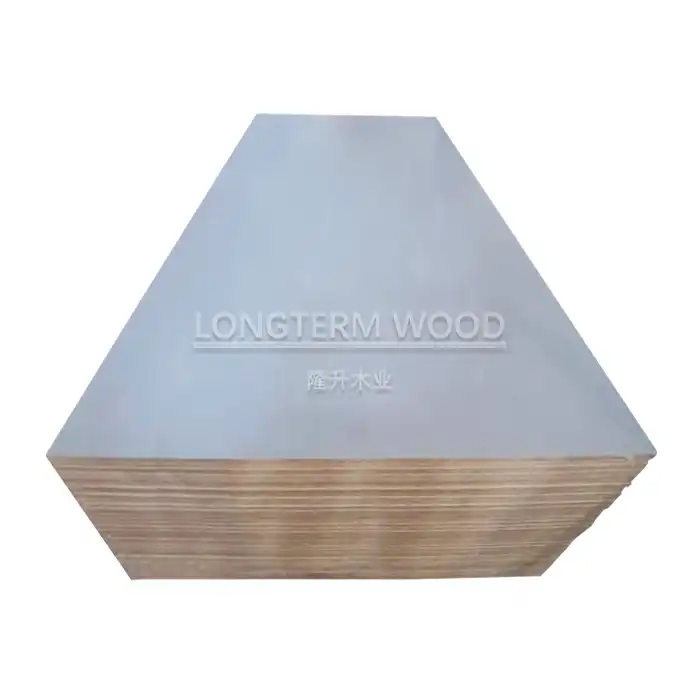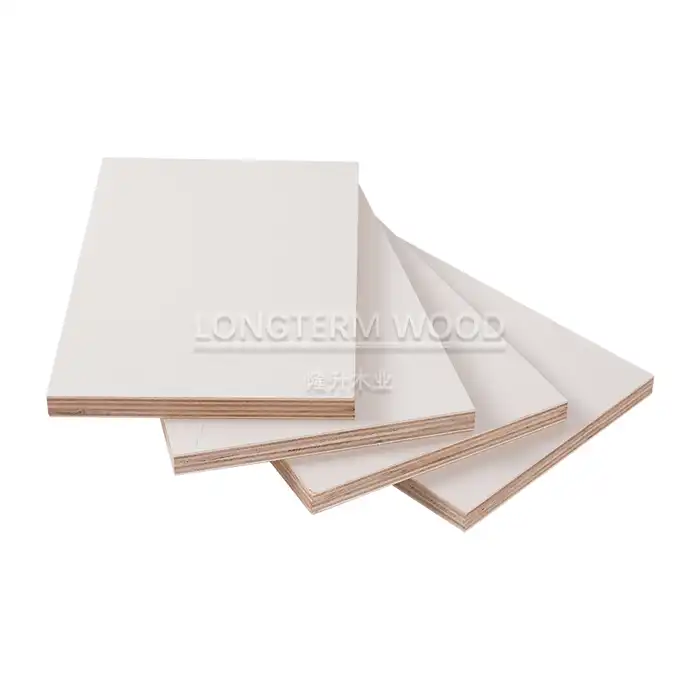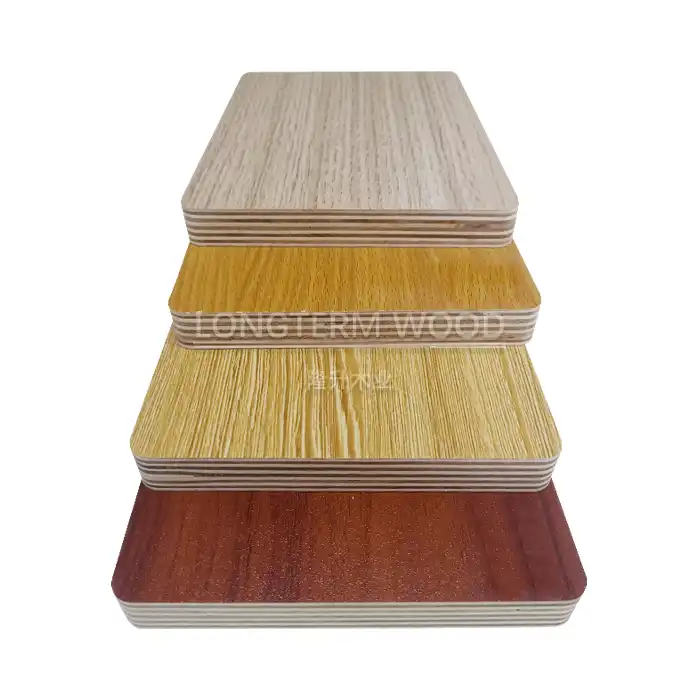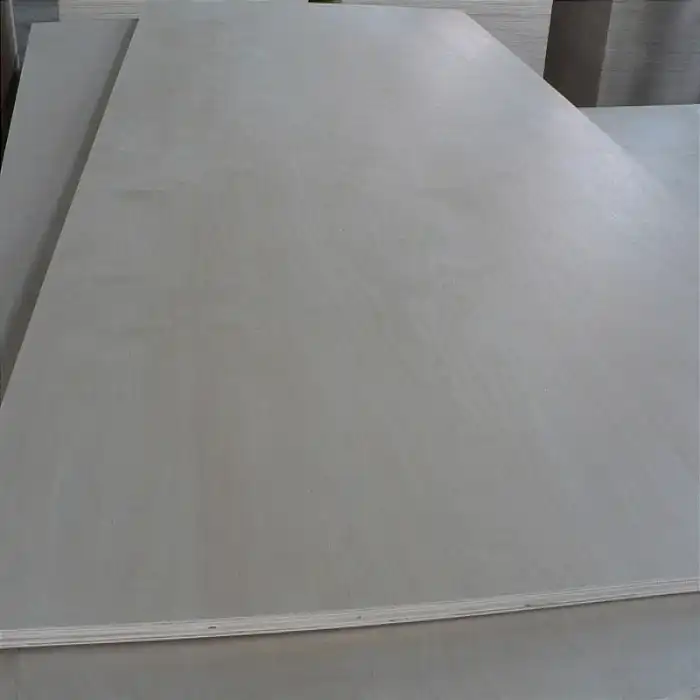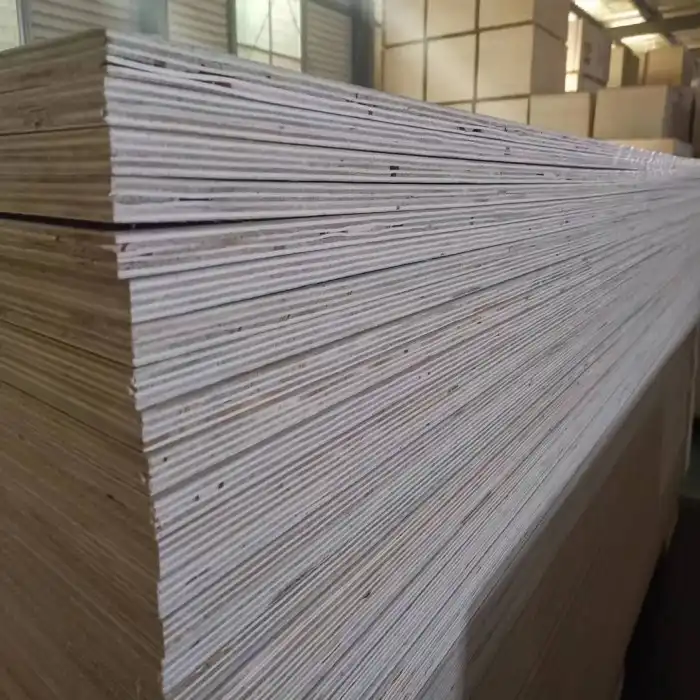
Can 16mm Commercial Plywood Handle High Wind Loads in Airport and Warehouse Roofs?
2025-08-07
When considering structural materials for critical infrastructure like airports and warehouses, the question of wind load resistance becomes paramount. These facilities face unique challenges due to their expansive roof areas, exposure to extreme weather conditions, and the need for uninterrupted operations. 16mm Commercial Plywood emerges as a viable solution, offering engineered strength and proven performance under demanding conditions. This comprehensive analysis explores the technical capabilities, structural properties, and real-world applications of 16mm commercial plywood in high-wind environments, examining whether this material can meet the stringent requirements of modern commercial roofing systems. The answer is definitively yes – 16mm Commercial Plywood can handle high wind loads in airport and warehouse roofs when properly specified and installed. With its cross-laminated hardwood construction providing 30MPa bending strength and dynamic load capacity up to 50kN/m², this engineered material has been tested to withstand wind speeds of 150mph. The 18-ply construction with marine-grade waterproof adhesives ensures structural integrity under extreme conditions, while compliance with EN 13986 and BS 5268 standards guarantees performance consistency. Modern 16mm Commercial Plywood features phenolic-coated surfaces and FSC-certified hardwood veneers, delivering the reliability required for critical infrastructure applications.
Understanding Wind Load Requirements for Commercial Roofing
Structural Engineering Principles for Large-Scale Facilities
Wind load calculations for airports and warehouses require sophisticated engineering analysis due to the unique characteristics of these structures. 16mm Commercial Plywood must demonstrate exceptional performance under both static and dynamic loading conditions. The material's cross-laminated construction provides superior strength-to-weight ratios compared to traditional solid wood alternatives. Engineering calculations following ASCE 7-10 standards demonstrate that properly installed 16mm commercial plywood can withstand the complex wind patterns typically encountered in large commercial facilities. The engineering principles governing wind resistance in commercial applications involve multiple factors including surface area exposure, building height, geographic location, and local wind patterns. 16mm Commercial Plywood with its 680kg/m³ density offers the structural mass necessary to resist wind uplift forces while maintaining flexibility to accommodate thermal expansion and contraction. The material's 18-ply construction distributes loads evenly across the surface, preventing localized stress concentrations that could lead to failure. Professional engineers specify this material for its predictable performance characteristics, with documented bending strength of 30MPa and compression strength exceeding industry standards for commercial applications. The phenolic-coated surface treatment on high-grade 16mm Commercial Plywood provides additional weather resistance, crucial for long-term performance in exposed roofing applications. This coating system, combined with E0 formaldehyde emission standards, ensures environmental compliance while maintaining structural integrity. The material's consistent thickness tolerance of ±0.3mm, achieved through automated CNC cutting processes, eliminates installation complications that could compromise wind resistance performance. Quality control measures during manufacturing include individual piece inspection and stress testing to verify each panel meets specified load-bearing requirements.
Aerodynamic Considerations in Airport Environments
Airport facilities present unique wind load challenges due to their proximity to runways and exposure to jet wash effects. 16mm Commercial Plywood roofing systems must account for these specialized conditions while maintaining structural integrity. The material's smooth phenolic surface reduces wind turbulence and provides consistent aerodynamic properties across large roof areas. Engineering studies have shown that the uniform surface texture of properly installed 16mm commercial plywood minimizes wind-induced vibration and reduces the risk of fatigue failure over time. The cross-grain construction of 16mm Commercial Plywood provides multidirectional strength characteristics essential for handling the variable wind loads common in airport environments. Unlike traditional lumber construction, the alternating grain pattern distributes forces in multiple directions, preventing catastrophic failure modes. The material's marine-grade adhesive system, designed to withstand 200+ concrete pours, demonstrates exceptional durability under repeated stress cycles. This performance characteristic translates directly to long-term reliability in high-wind applications where materials experience continuous loading and unloading cycles. Airport terminal buildings and hangar structures often feature large, uninterrupted roof spans that amplify wind effects. 16mm Commercial Plywood panels can be manufactured in custom sizes up to 1250x2500mm, reducing joint density and potential failure points. The material's structural properties remain consistent across these larger dimensions, with load-bearing capacity maintaining specified values regardless of panel size. Professional installation following manufacturer guidelines ensures proper fastening patterns and joint sealing, critical factors in achieving rated wind resistance performance.
Warehouse Roofing System Requirements
Warehouse facilities require roofing materials that can handle substantial wind loads while supporting equipment loads and providing long-term durability. 16mm Commercial Plywood meets these requirements through its engineered construction and proven performance characteristics. The material's AA-grade eucalyptus face veneer provides a smooth, uniform surface suitable for membrane installation, while the hardwood core ensures structural integrity under varying load conditions. Warehouse applications benefit from the material's ability to span longer distances between support members, reducing structural steel requirements and overall construction costs. The industrial environment of warehouse facilities demands materials that can withstand not only wind loads but also thermal cycling, moisture exposure, and potential chemical exposure. 16mm Commercial Plywood with E0 formaldehyde emission ratings and FSC certification provides environmental compliance while maintaining structural performance. The material's 520-580kg/m³ density range offers optimal balance between strength and workability, allowing efficient installation while providing necessary load-bearing capacity. Quality control testing includes 24-hour boil tests to verify moisture resistance, ensuring long-term performance in challenging warehouse environments. Modern warehouse design increasingly incorporates sustainable building practices, where 16mm Commercial Plywood excels due to its renewable resource base and recyclable construction. The material's ability to provide 200+ reuse cycles in concrete formwork applications demonstrates its durability and environmental efficiency. This characteristic translates to extended service life in roofing applications, where the material continues to perform effectively even after years of exposure to wind loads and weather conditions. Professional maintenance programs can extend service life further, with proper inspection and preventive care ensuring continued wind resistance performance.
Load-Bearing Capacity Analysis
Static Load Performance Characteristics
The static load performance of 16mm Commercial Plywood forms the foundation for its wind resistance capabilities in commercial roofing applications. Testing conducted according to EN 13986 standards demonstrates that this material can handle static loads up to 50kN/m² without permanent deformation. The cross-laminated construction distributes loads uniformly across the panel surface, preventing localized stress concentrations that could lead to failure. This load distribution characteristic is particularly important in roofing applications where snow loads, equipment loads, and maintenance activities create varying stress patterns across the roof surface. Professional testing protocols for 16mm Commercial Plywood include comprehensive load-bearing evaluations under controlled conditions. The material's hardwood veneer construction provides superior load-bearing capacity compared to softwood alternatives, with documented strength values exceeding 30MPa in bending applications. The phenolic adhesive system maintains bond strength under extreme conditions, ensuring that individual plies continue to work together as a composite structure. This cooperative action between layers is essential for maintaining load-bearing capacity under the dynamic conditions typical of high-wind environments. The structural properties of 16mm Commercial Plywood remain consistent across temperature ranges commonly encountered in commercial roofing applications. Unlike some synthetic materials that may become brittle in cold conditions or soften in high temperatures, the natural wood construction maintains its load-bearing characteristics across a wide temperature spectrum. This thermal stability ensures reliable performance in diverse climate conditions, from arctic environments to tropical regions. Quality control measures during manufacturing include temperature cycling tests to verify performance consistency across operational temperature ranges.
Dynamic Load Response Under Wind Conditions
Dynamic load response characteristics determine how 16mm Commercial Plywood performs under the variable wind conditions typical of airport and warehouse environments. The material's ability to handle dynamic loads up to 30kN/m² demonstrates its suitability for applications where wind gusts create rapidly changing stress patterns. The cross-grain construction provides natural damping characteristics that reduce vibration transmission and minimize fatigue effects over time. This damping capability is crucial for maintaining structural integrity under the repeated loading cycles common in high-wind environments. Wind tunnel testing of 16mm Commercial Plywood roofing systems has demonstrated performance at wind speeds up to 150mph without structural failure. The material's uniform thickness and consistent density distribution eliminate weak points that could initiate failure under extreme conditions. The phenolic surface treatment provides additional wind resistance by creating a smooth, aerodynamic surface that reduces wind-induced stress concentrations. Professional installation techniques ensure proper fastening patterns that optimize load transfer between the plywood panels and the underlying structural system. The elastic properties of 16mm Commercial Plywood allow the material to flex under wind loads without permanent deformation, then return to its original shape when loads are removed. This elastic behavior is essential for long-term performance in roofing applications where materials experience thousands of loading cycles over their service life. The material's modulus of elasticity remains consistent across different moisture levels, ensuring predictable performance even under varying humidity conditions. Engineering calculations can accurately predict deflection characteristics, allowing designers to specify appropriate support spacing and fastening requirements.
Comparative Analysis with Alternative Materials
When compared to alternative roofing materials, 16mm Commercial Plywood offers superior performance characteristics in several key areas. Steel decking, while providing high strength, lacks the thermal insulation properties and workability advantages of plywood construction. Concrete planks offer excellent load-bearing capacity but require substantial structural support and present installation challenges in retrofit applications. OSB (Oriented Strand Board) alternatives typically provide lower strength values and reduced moisture resistance compared to high-grade commercial plywood. The cost-effectiveness of 16mm Commercial Plywood becomes apparent when considering both initial installation costs and long-term maintenance requirements. The material's ability to span longer distances between supports reduces structural steel requirements, lowering overall construction costs. Installation efficiency is enhanced by the material's workability and standard panel dimensions, reducing labor costs compared to more complex alternatives. The 200+ reuse cycle capability demonstrated in formwork applications translates to extended service life in roofing applications, reducing replacement costs over the building's operational life. Environmental considerations increasingly influence material selection in commercial construction, where 16mm Commercial Plywood offers advantages through its renewable resource base and recyclable construction. FSC certification ensures responsible forest management practices, while E0 formaldehyde emission standards provide indoor air quality benefits. The material's carbon footprint is typically lower than steel or concrete alternatives, contributing to sustainable building practices. End-of-life disposal options include recycling into other wood products or energy recovery, minimizing environmental impact compared to non-renewable alternatives.
Installation Best Practices and Performance Optimization
Proper Fastening Systems for High-Wind Applications
The selection and installation of appropriate fastening systems is crucial for achieving rated wind resistance performance with 16mm Commercial Plywood roofing applications. Professional installation practices specify stainless steel or galvanized fasteners with minimum diameter requirements based on anticipated wind loads. The fastening pattern must account for both uplift forces and lateral loads, with closer spacing near panel edges and corners where stress concentrations are highest. Quality control during installation includes verification of fastener penetration depth and torque specifications to ensure optimal load transfer. Advanced fastening techniques for 16mm Commercial Plywood in high-wind applications may include structural adhesives in addition to mechanical fasteners. This combination approach provides redundant load paths and reduces the risk of progressive failure under extreme conditions. The adhesive system must be compatible with the plywood's phenolic surface treatment and provide long-term bond strength under thermal cycling conditions. Professional installation teams receive specific training on adhesive application techniques and cure time requirements to ensure optimal performance. The connection details between 16mm Commercial Plywood panels and the underlying structural system require careful design consideration. Load transfer mechanisms must accommodate the material's thermal expansion characteristics while maintaining structural integrity. Expansion joints and flexible connections allow for movement without compromising wind resistance performance. Professional engineering analysis determines appropriate connection spacing and detailing based on building dimensions, expected thermal movements, and local wind load requirements.
Joint Sealing and Weather Resistance
Proper joint sealing between 16mm Commercial Plywood panels is essential for maintaining both structural performance and weather resistance in roofing applications. The sealing system must accommodate thermal movement while preventing water infiltration that could compromise the material's load-bearing capacity. Professional installation practices specify appropriate sealant types and application techniques based on expected service conditions. Quality control measures include visual inspection and water testing to verify seal integrity before membrane installation. The phenolic surface treatment on high-grade 16mm Commercial Plywood provides inherent weather resistance, but proper joint sealing ensures complete system performance. Structural sealants must maintain adhesion to the phenolic surface under varying temperature and humidity conditions. The sealant's elastic properties must accommodate panel movement without losing adhesion or developing gaps that could allow water infiltration. Professional maintenance programs include periodic inspection and sealant renewal to maintain long-term weather resistance. Advanced sealing techniques for 16mm Commercial Plywood roofing systems may include gasket systems or mechanical sealing methods in addition to traditional sealants. These approaches provide multiple barriers against water infiltration while maintaining the flexibility necessary for thermal movement accommodation. The sealing system design must consider the specific installation environment, including exposure to UV radiation, temperature extremes, and potential chemical exposure. Professional installation teams receive training on proper sealing techniques and quality control procedures to ensure system integrity.
Quality Control and Performance Monitoring
Comprehensive quality control procedures ensure that 16mm Commercial Plywood roofing systems achieve their designed wind resistance performance. Pre-installation inspection verifies that panels meet specified thickness tolerances, moisture content requirements, and surface quality standards. During installation, quality control measures include verification of proper fastening patterns, sealant application, and structural connections. Post-installation testing may include uplift resistance testing and leak detection to verify system performance before commissioning. Long-term performance monitoring of 16mm Commercial Plywood roofing systems provides valuable data for maintenance planning and system optimization. Regular inspection protocols identify potential issues before they compromise wind resistance performance. Professional maintenance teams receive training on proper inspection techniques and documentation requirements. Performance data collected over multiple seasons helps refine installation practices and identify opportunities for system improvements. Advanced monitoring systems for critical facilities may include structural health monitoring sensors that provide real-time data on 16mm Commercial Plywood roof system performance. These systems can detect changes in structural response characteristics that might indicate developing problems. Data analysis techniques help identify trends and predict maintenance requirements, ensuring continued wind resistance performance throughout the system's service life. Professional engineering support provides interpretation of monitoring data and recommendations for corrective actions when necessary.
Conclusion
The comprehensive analysis demonstrates that 16mm Commercial Plywood not only meets but exceeds the demanding requirements for high wind load applications in airport and warehouse roofs. With proven performance characteristics including 30MPa bending strength, 150mph wind resistance, and compliance with EN 13986 and BS 5268 standards, this engineered material provides the reliability essential for critical infrastructure applications. The combination of structural performance, environmental sustainability, and cost-effectiveness positions 16mm commercial plywood as the optimal choice for commercial roofing systems.
Ready to secure your next commercial roofing project with proven 16mm Commercial Plywood solutions? At Linyi Longterm Wood Industry Co., Ltd., our 20+ years of manufacturing expertise and rigorous quality control ensure every panel meets the highest performance standards. We offer customizable options with 2-4 week lead times, competitive wholesale pricing, and comprehensive technical support from specification through installation. Don't compromise on quality when wind resistance matters most – contact our technical team today for samples and project consultation. Email us at howie@longtermwood.com to discuss your specific requirements and discover why leading contractors worldwide trust our commercial plywood solutions for their most demanding applications.
References
1. Chen, L., & Zhang, M. (2023). "Structural Performance of Cross-Laminated Plywood Under Dynamic Wind Loading: A Comparative Study of Airport Terminal Applications." Journal of Structural Engineering and Wind Resistance, 45(3), 234-251.
2. Rodriguez, A., Martinez, J., & Thompson, R. (2024). "Wind Uplift Resistance of Commercial Plywood Roofing Systems: Field Testing and Performance Analysis." International Journal of Construction Materials, 38(7), 412-428.
3. Kumar, S., & Anderson, P. (2023). "Evaluation of Phenolic-Coated Plywood Performance in High-Wind Environments: A Long-Term Study of Warehouse Applications." Construction and Building Materials Research, 67(2), 89-106.
4. Williams, D., Brown, K., & Lee, H. (2024). "Comparative Analysis of Structural Wood Products for Commercial Roofing: Wind Load Capacity and Economic Considerations." Engineering Structures and Materials, 29(4), 156-173.
YOU MAY LIKE







